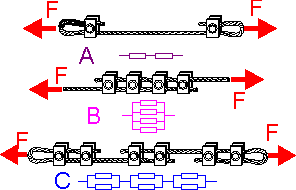 Machines and engineering structures consist of a large number of structural elements that can fail. The way elements are connected and their reliability define the reliability of the whole structure. There are examples with series connection A, parallel connection B and a combination C.
Machines and engineering structures consist of a large number of structural elements that can fail. The way elements are connected and their reliability define the reliability of the whole structure. There are examples with series connection A, parallel connection B and a combination C.
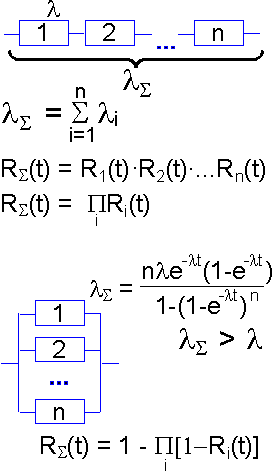 For a series system, failure of an elements results in failure of the whole structure. Reliability of the structure RS is the product of the reliabilities of its elements. The failure rate of the series structure is the sum of failure rates of its elements. For a parallel system the failure rate is smaller than failure rate of its elements.
For a series system, failure of an elements results in failure of the whole structure. Reliability of the structure RS is the product of the reliabilities of its elements. The failure rate of the series structure is the sum of failure rates of its elements. For a parallel system the failure rate is smaller than failure rate of its elements.
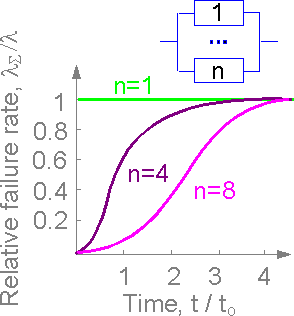 The failure rate decreases if the number of redundant elements increases. The failure rate decreases over all time except the initial and final stages.
The failure rate decreases if the number of redundant elements increases. The failure rate decreases over all time except the initial and final stages.
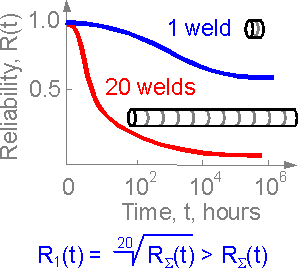 An example of an inverse problem: If the reliability of the entire oil pipeline is known the reliability of a single butt-weld can be predicted.
An example of an inverse problem: If the reliability of the entire oil pipeline is known the reliability of a single butt-weld can be predicted.
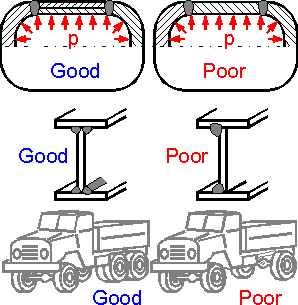 The figure shows examples of structures with parallel connections. The analysis shows that the reliability of structures with a larger number of redundant elements is higher. This does not mean that parallel connection is always economically effective.
The figure shows examples of structures with parallel connections. The analysis shows that the reliability of structures with a larger number of redundant elements is higher. This does not mean that parallel connection is always economically effective.
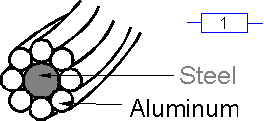 Among structural elements there are parts that don't carry the load and failure of these parts has no significant effect on the load-carrying ability of the structure. For example, in a 7200 volt electric power line ACSR (aluminum conductor, steel reinforced) the aluminum wire does not accept enough of the load. The failure of the steel wire results in failure of the line. A single element (steel wire) reliability model can be proposed to judge the carrying ability of the electric line.
Among structural elements there are parts that don't carry the load and failure of these parts has no significant effect on the load-carrying ability of the structure. For example, in a 7200 volt electric power line ACSR (aluminum conductor, steel reinforced) the aluminum wire does not accept enough of the load. The failure of the steel wire results in failure of the line. A single element (steel wire) reliability model can be proposed to judge the carrying ability of the electric line.
 2015-08-13
2015-08-13 310
310








